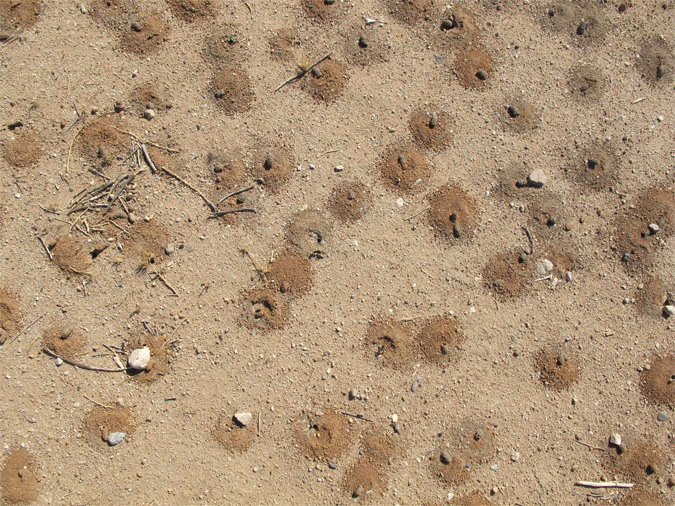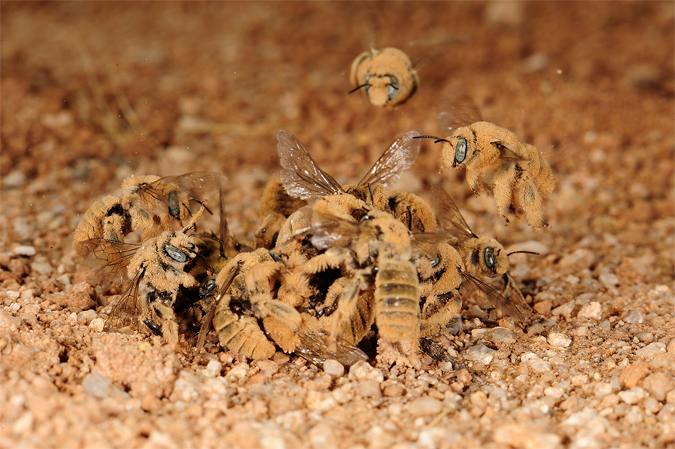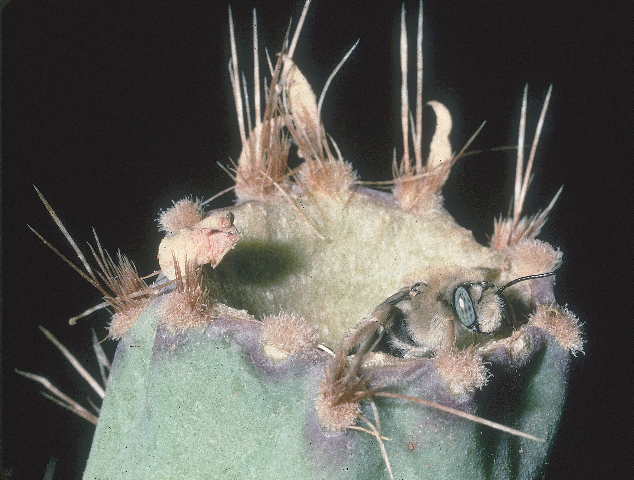A message from the University of Arizona Entomology and EEB departments
Wanted Alive!
Notification of Cactus Bee Nesting Sites around Tucson
(Diadasia rinconis)
Do you have lots of cacti in your area? Has your property (especially but not limited to NW Tucson areas) erupted in little “pimples” of excavated soil? Hundreds or thousands of them? You may see a smooth round pencil diameter central hole surrounded by a circular mound of darker soil. You may also notice little mud chimneys extending from the nest entrances. These are harmless native bees that are the chief pollinators of our prickly pear and cholla cacti. Think of these bees as single moms with families to feed. Please don’t spray them with insecticides, they will only be active during the spring for a few weeks. They move their nesting sites from year to year. This is a rare occurrence that most Tucsonans will never see. Please call us! These bees nest in large to giant aggregations of many individuals but only when the prickly pear and cholla cacti are blooming (April - May).
We (University of AZ Entomology and EEB departments) are conducting research on this native ground-nesting bee (especially their mating behaviors and what bacteria or fungi they may be adding to their pollen and nectar larval food provisions). We’d like to study these bees on your property.
Please let us know if you have these bees nesting on your property. Again- we are looking for the brown cactus bees (Diadasia) not the migrating swarms of Africanized honey bees that you may also have seen.
Please contact:
Dr. Stephen Buchmann
Voicemail: (520) 299-5272
Email: buchmann.stephen@gmail.com
Cactus Bee nests


